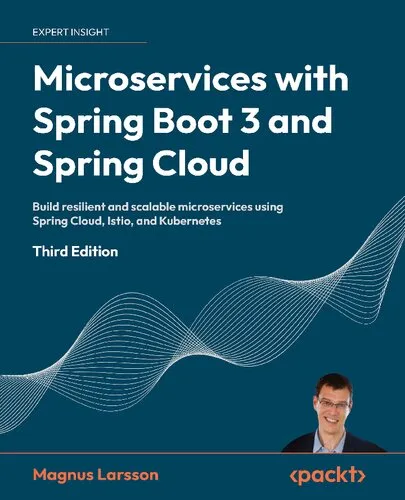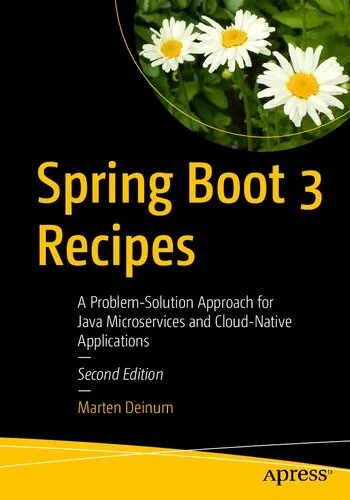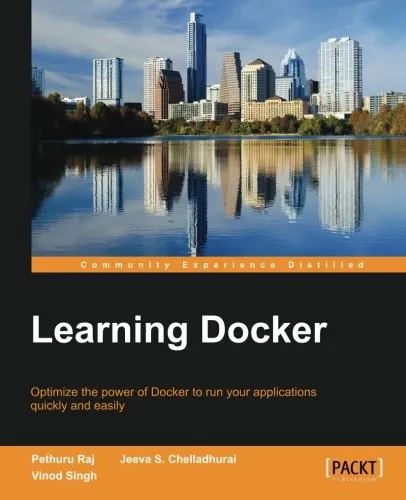Practical Microservices Architectural Patterns - Event-Based Java Microservices with Spring Boot and Spring Cloud
4.0
بر اساس نظر کاربران

شما میتونید سوالاتتون در باره کتاب رو از هوش مصنوعیش بعد از ورود بپرسید
هر دانلود یا پرسش از هوش مصنوعی 2 امتیاز لازم دارد، برای بدست آوردن امتیاز رایگان، به صفحه ی راهنمای امتیازات سر بزنید و یک سری کار ارزشمند انجام بدینکتاب های مرتبط:
معرفی کتاب
کتاب "Practical Microservices Architectural Patterns - Event-Based Java Microservices with Spring Boot and Spring Cloud" یکی از منابع جامع و کارآمد برای توسعهدهندگان است که به اصول، الگوها و اقدامات عملی میپردازد که به ساخت سیستمهای مدرن مبتنی بر Microservices کمک میکند.
خلاصهای دقیق از کتاب
این کتاب به طراحی و پیادهسازی Microservices پرداخت و به طور خاص بر رویکردهای Event-Based تمرکز دارد. با استفاده از امکانات Spring Boot و Spring Cloud، کتاب بازنگری جامعی از اینکه چگونه مایکروسرویسها میتوانند به صورت مستقل و نیز یکپارچه کار کنند ارائه میدهد. در این اثر، ابتدا مفاهیم پایهای Microservice Architecture و چالشهای عمومی آن معرفی میشود و سپس نویسنده به چگونگی پیشی گرفتن از این چالشها با الگوهای معماری مؤثر میپردازد.
از جمله ویژگیهای ویژه این کتاب، ارائه مثالهای کاربردی و پروژههای عملی است که به خوانندگان کمک میکند تا فوری مفاهیم را در پروژههای واقعی اعمال کنند. هر فصل با مثالهایی روشن و کدنویسی سازمانیافته همراه است که به شما نوآموزان و حتی کارشناسان درک عمیقتری از معماری Microservices میدهد.
نکات کلیدی
- درک عمیق از مفاهیم Microservices و چگونگی پیادهسازی آنها با استفاده از Spring Boot و Spring Cloud.
- آشنایی با Design Patterns مختلفی که در معماری Microservices کاربرد دارند، مانند Saga، CQRS، و Event Sourcing.
- تسلط بر روی الگوهای پیامرسانی و نوشتار کدهای Event-Driven با استفاده از Kafka و RabbitMQ.
- بهترین روشها برای مقیاسپذیری، انعطافپذیری، و ارتقاء سیستمهای مبتنی بر Microservices.
نقل قولهای معروف از کتاب
تغییرات فناوری، نیازمند ساختارها و چارچوبهایی هستند که بتوانند انعطافپذیری و مقیاسپذیری را به حداکثر برسانند. معماری Microservices این نیازها را با شکلدهی به جنبههای مختلف طراحی و توسعه نرمافزار به خوبی برآورده میکند.
"در مسیری که به سوی موفقیت طی میکنیم، هیچگاه نباید از الگوهای معماری غافل شویم- آنها نقشههای راهی هستند که ما را به سیستمهایی قابل اعتماد و پایدار هدایت میکنند."
چرا این کتاب اهمیت دارد
با رشد روزافزون نیاز به سیستمهای توزیع شده و انعطافپذیر، معماری Microservices به طور فزایندهای در صنایع مختلف جای خود را باز کرده است. این کتاب با تکیه بر عملی بودن و بیان الگوهای کاربردی، به توسعهدهندگان این امکان را میدهد که نه تنها به درک عمیقتری از Microservices برسند، بلکه بتوانند این معماری را در پروژههای خود پیاده کنند.
با تمرکز بر رویکرد Event-Driven، کتاب نشان میدهد که چگونه میتوان سیستمهایی را طراحی کرد که برای پشتیبانی از مقیاسپذیری بالا و مدیریت بلوکهای داخلی سازمانها مناسب باشند. این کتاب یک منبع ضروری برای کسانی است که میخواهند در دنیای معماری نرمافزار قدم بگذارند و در همان حال، به ساختارهای پایدار و مستحکم برسند.
Introduction
Welcome to the world of microservices architecture, where the agility of designing modular, scalable, and resilient software applications comes to life. "Practical Microservices Architectural Patterns - Event-Based Java Microservices with Spring Boot and Spring Cloud" is a comprehensive guide that delves deeply into the intricacies of microservices, tailored specifically for Java developers. With the power of Spring Boot and Spring Cloud, this book equips readers with the knowledge to design, implement, and orchestrate microservices with precision and efficiency.
Detailed Summary of the Book
Microservices architecture has revolutionized the way software applications are developed and maintained. This book begins by laying a strong foundation on the principles of microservices, exploring the various aspects that distinguish them from traditional monolithic architectures. As you turn the pages, you'll discover how to leverage the Spring Boot framework to simplify the process of building standalone, production-grade Spring-based applications with ease.
The book places a special emphasis on event-driven architectures, highlighting the benefits of asynchronous communication in microservices. With the integration of Spring Cloud, developers can achieve a seamless microservices experience, utilizing powerful tools for configuration management, service discovery, and more. The narrative is rich with practical examples, illustrating how these technologies can be used to solve real-world challenges.
Readers will also explore advanced topics such as API gateways, circuit breakers, and distributed tracing, all essential for building robust enterprise applications. With clear explanations and detailed code snippets, the book offers invaluable insights into designing a microservices ecosystem that is both flexible and maintainable.
Key Takeaways
- Understand the core concepts of microservices and their advantages over monolithic architectures.
- Learn how to effectively use Spring Boot to create independent and easily deployable services.
- Explore the event-driven approach for building responsive and resilient microservices systems.
- Discover the capabilities of Spring Cloud in managing service configuration and communication.
- Gain insights on implementing security and monitoring strategies for microservices.
- Master the principles of distributed data management and consistency models.
Famous Quotes from the Book
"Microservices are all about building applications that are easier to scale, manage, and extend."
"Spring Boot and Spring Cloud harmonize to create a perfect symphony for developing modern microservices."
"Event-driven architectures empower developers to build systems that are not only highly scalable but also resilient to change."
Why This Book Matters
In the rapidly evolving technological landscape, staying ahead means embracing architectures that support dynamic scalability, continuous deployment, and easy maintenance. This book makes a significant contribution to the field by demystifying the process of building complex systems with microservices. It serves as an indispensable resource for developers seeking to enhance their expertise in Java microservices, particularly those who wish to adopt an event-driven approach.
What sets this book apart is its practical orientation. The examples and exercises included guide readers through the entire development process, alleviating the steep learning curve associated with microservices. Furthermore, it emphasizes the experiential learning model, promoting a deeper understanding through hands-on practice. For anyone committed to mastering microservices architecture, this book is an essential read that bridges the gap between theory and practical implementation.
دانلود رایگان مستقیم
شما میتونید سوالاتتون در باره کتاب رو از هوش مصنوعیش بعد از ورود بپرسید
دسترسی به کتابها از طریق پلتفرمهای قانونی و کتابخانههای عمومی نه تنها از حقوق نویسندگان و ناشران حمایت میکند، بلکه به پایداری فرهنگ کتابخوانی نیز کمک میرساند. پیش از دانلود، لحظهای به بررسی این گزینهها فکر کنید.
این کتاب رو در پلتفرم های دیگه ببینید
WorldCat به شما کمک میکنه تا کتاب ها رو در کتابخانه های سراسر دنیا پیدا کنید
امتیازها، نظرات تخصصی و صحبت ها درباره کتاب را در Goodreads ببینید
کتابهای کمیاب یا دست دوم را در AbeBooks پیدا کنید و بخرید
1562
بازدید4.0
امتیاز1
نظر98%
رضایتنظرات:
4.0
بر اساس 1 نظر کاربران
samsul
23 دسامبر 2024، ساعت 17:42
It is good for solution architects because of the detailed explanation of the infrastructure, monolithic and microservices architecture patterns
Questions & Answers
Ask questions about this book or help others by answering
No questions yet. Be the first to ask!


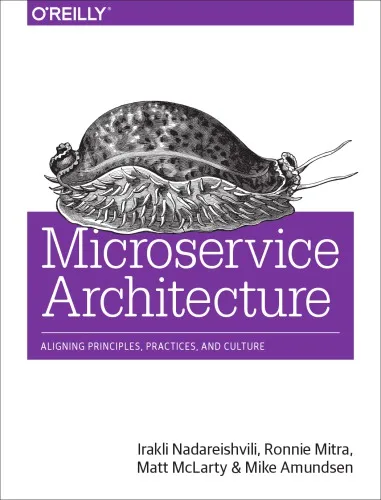
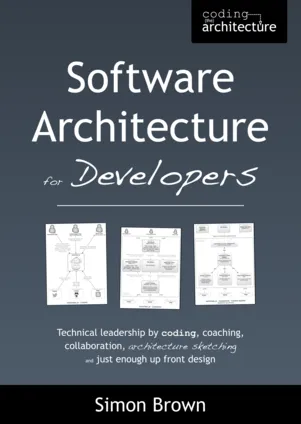
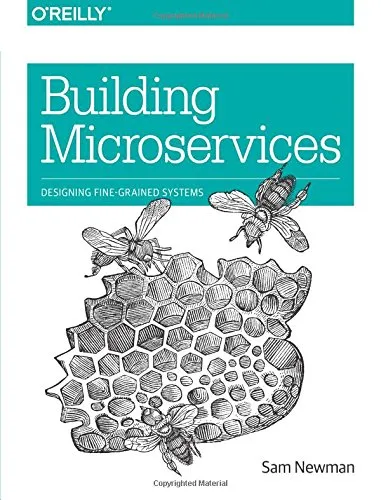
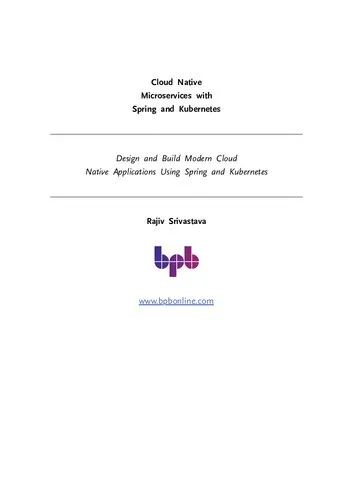
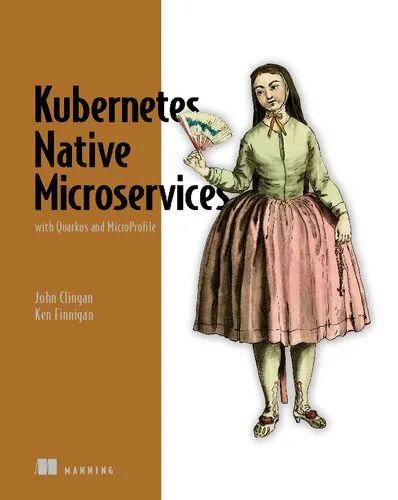
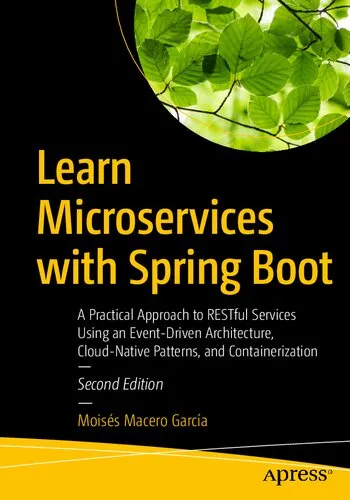
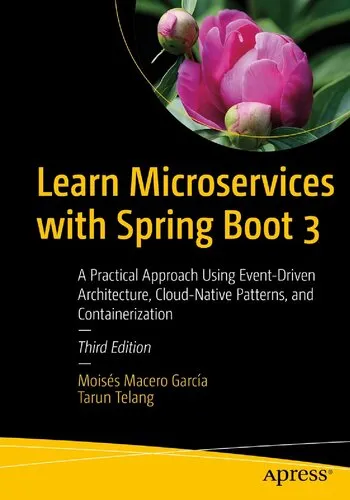
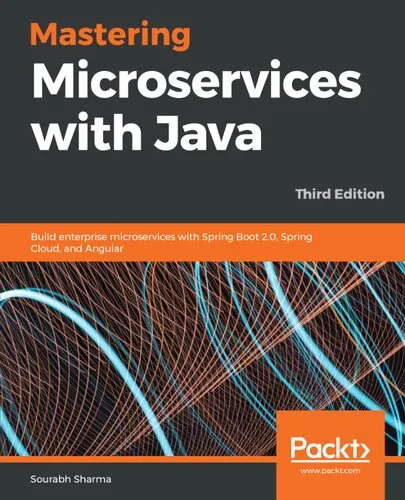
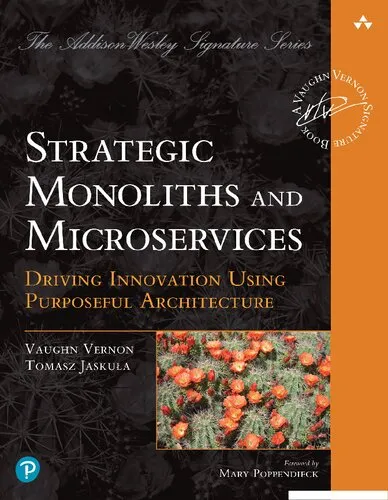
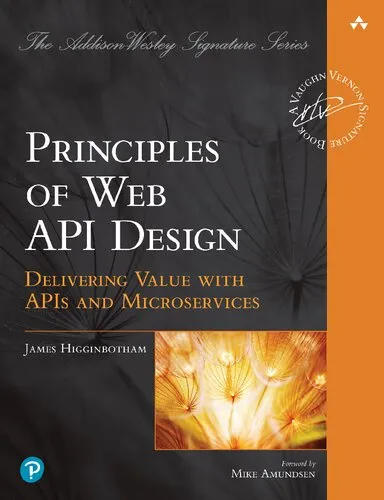
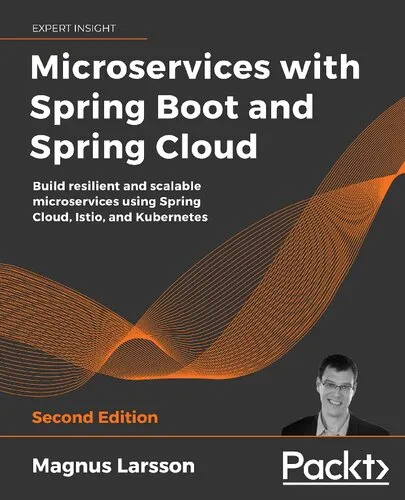
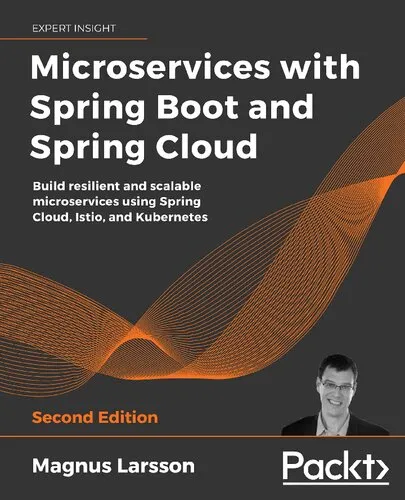
![Microservices with Spring Boot 3 and Spring Cloud: Build resilient and scalable microservices [Team-IRA] (True PDF)](https://s3.refhub.ir/images/thumb/Microservices_with_Spring_Boot_3_and_Spring_C_4953.webp)
